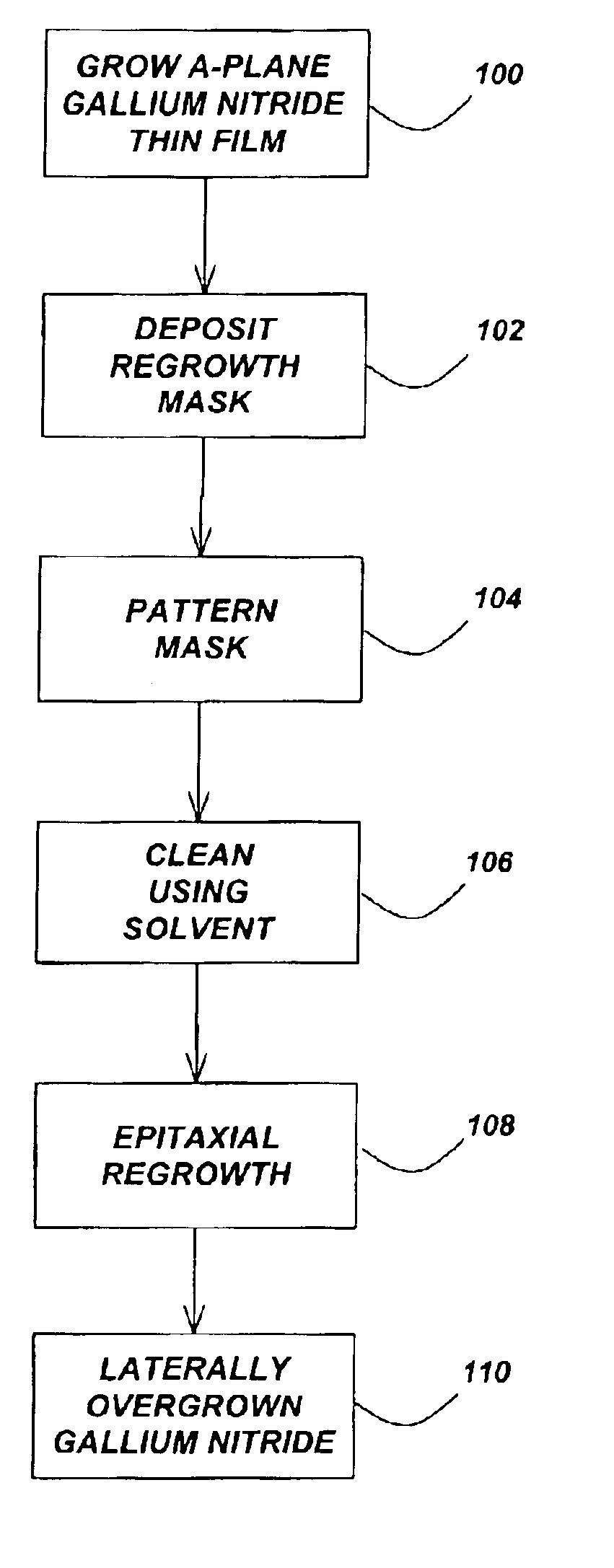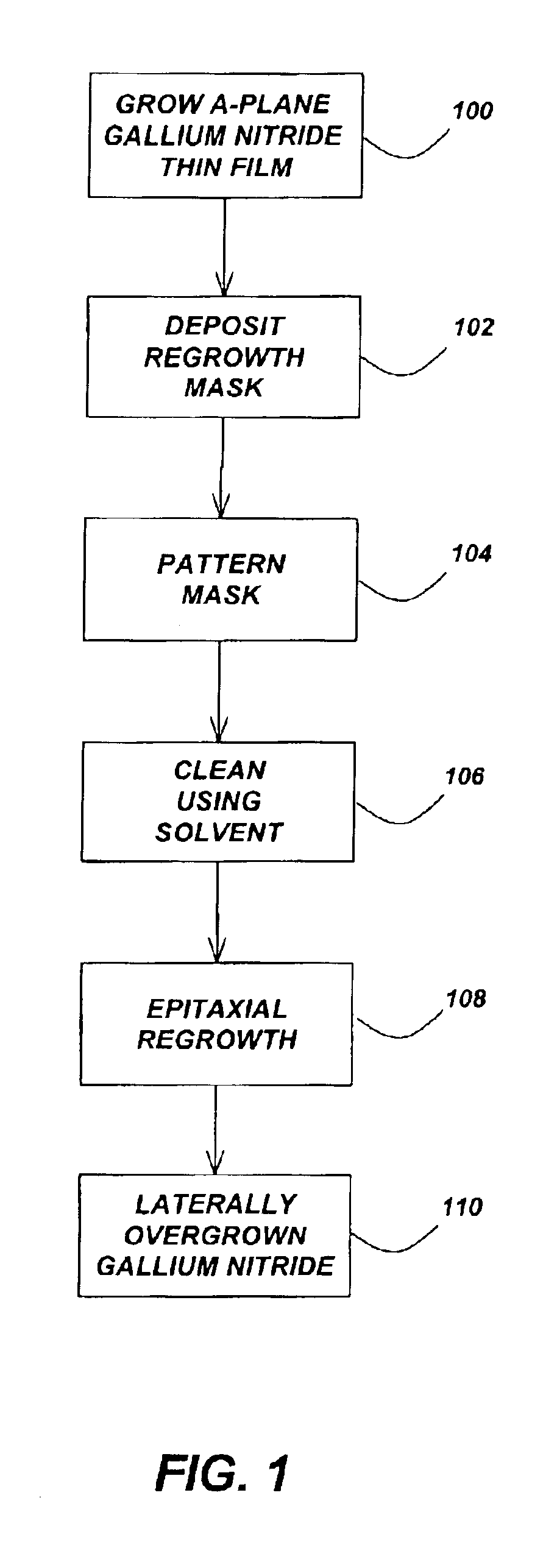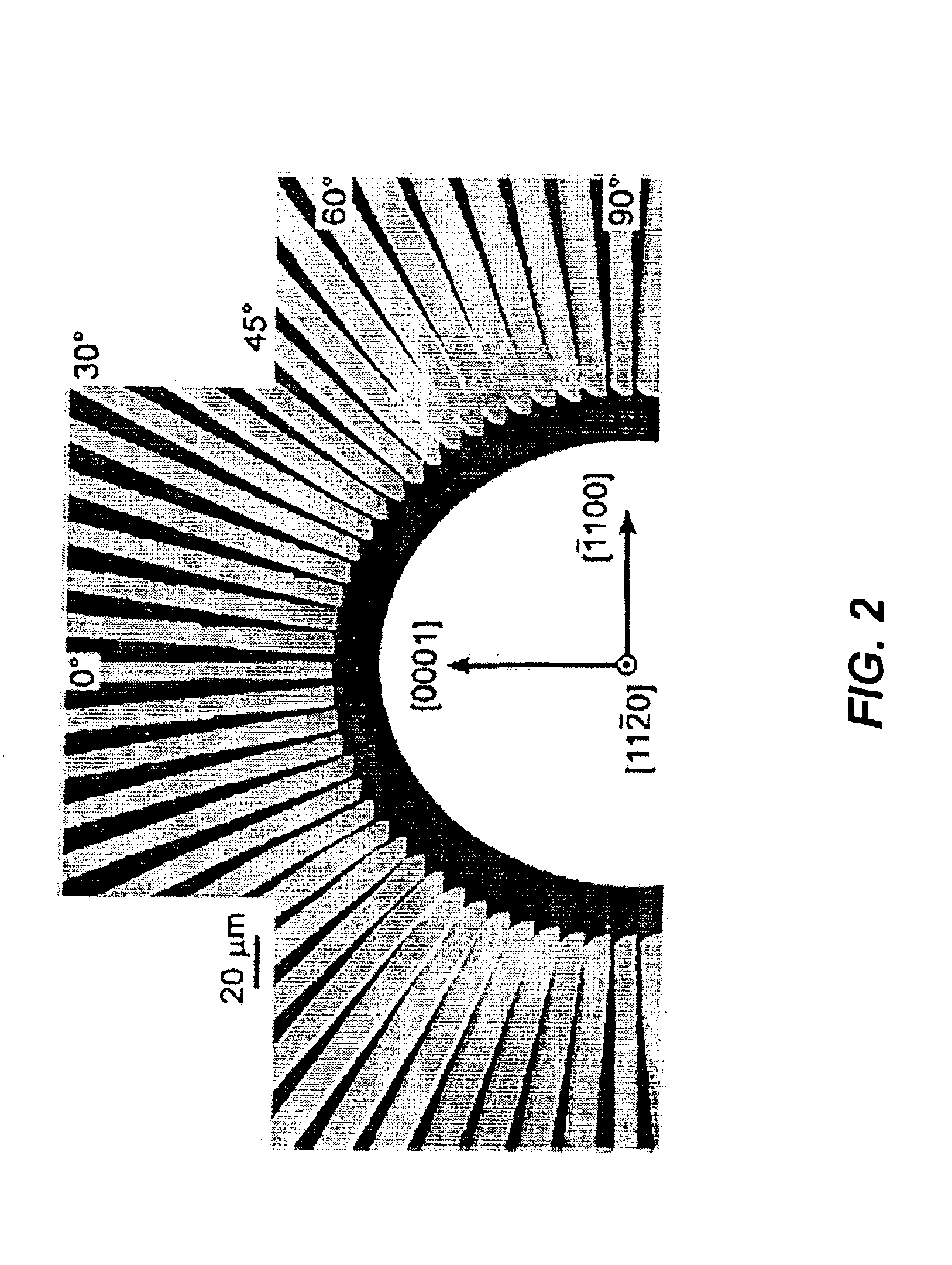Dislocation reduction in non-polar gallium nitride thin films
a gallium nitride and thin film technology, applied in the field of semiconductor materials, can solve problems such as fixed sheet charge formation, and achieve the effect of reducing threading dislocations and gan films
- Summary
- Abstract
- Description
- Claims
- Application Information
AI Technical Summary
Benefits of technology
Problems solved by technology
Method used
Image
Examples
Embodiment Construction
[0021]In the following description of the preferred embodiment, reference is made to the accompanying drawings which form a part hereof, and in which is shown by way of illustration a specific embodiment in which the invention may be practiced. It is to be understood that other embodiments may be utilized and structural changes may be made without departing from the scope of the present invention.
[0022]Overview
[0023]The present invention reduces threading dislocation densities in a-GaN through the lateral overgrowth of a planar heteroepitaxial “seed” layer. Lateral overgrowth techniques require a processing step between two MOCVD growths, an initial heteroepitaxial growth and a regrowth that constitutes the lateral overgrowth. First, a thin patterned dielectric mask is applied to the seed layer. Upon regrowth, the GaN initially grows vertically through openings in the dielectric mask before laterally overgrowing the mask in directions perpendicular to the vertical growth direction. ...
PUM
| Property | Measurement | Unit |
|---|---|---|
| dislocation densities | aaaaa | aaaaa |
| threading dislocation densities | aaaaa | aaaaa |
| NON-POLAR | aaaaa | aaaaa |
Abstract
Description
Claims
Application Information
 Login to View More
Login to View More - R&D
- Intellectual Property
- Life Sciences
- Materials
- Tech Scout
- Unparalleled Data Quality
- Higher Quality Content
- 60% Fewer Hallucinations
Browse by: Latest US Patents, China's latest patents, Technical Efficacy Thesaurus, Application Domain, Technology Topic, Popular Technical Reports.
© 2025 PatSnap. All rights reserved.Legal|Privacy policy|Modern Slavery Act Transparency Statement|Sitemap|About US| Contact US: help@patsnap.com



